June 17, 2024 by Heather
Sharpening Your Knife
Sharpening Your Blade:
Many people think that it is difficult to sharpen a knife and that only Grandpa can do it. It is not a lost art and not difficult to master. Once you can sharpen by hand, you will be able to sharpen any edged tool. In fact, it is slightly addictive! Luckily, you will generally find all your kitchen knives blunt, so get to practise your new skill on them! Be careful; once your friends learn about your new “superpower”, you and your sharpening stone will be invited out a lot!
I get commissions for purchases made through links in this post.
List of Knife-Related Suppliers in South Africa.
If you feel that sharpening knives by hand is out of your reach, there are some quality gadgets that can help you maintain the correct angle. These sharpeners are just fine to use on factory made knives but wouldn’t be recommended for handmade knives as they remove a lot of material. Please remember to strop the edge after sharpening to remove the burr that formed. Here are a few handy sharpeners https://amzn.to/3zy9UDu
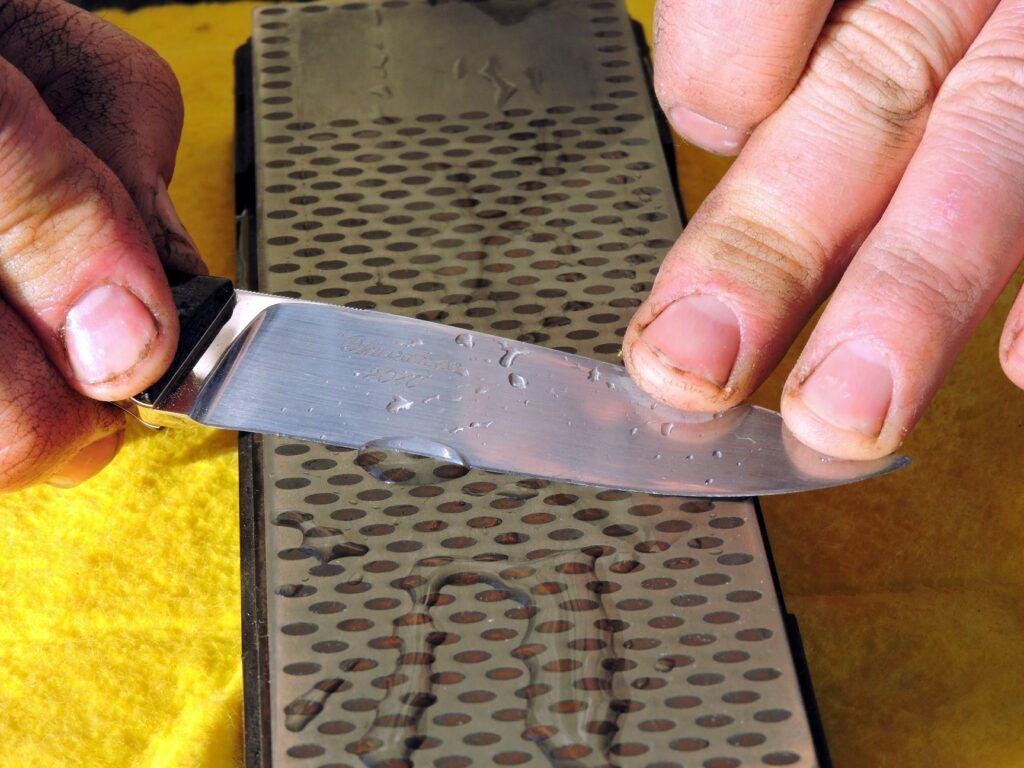
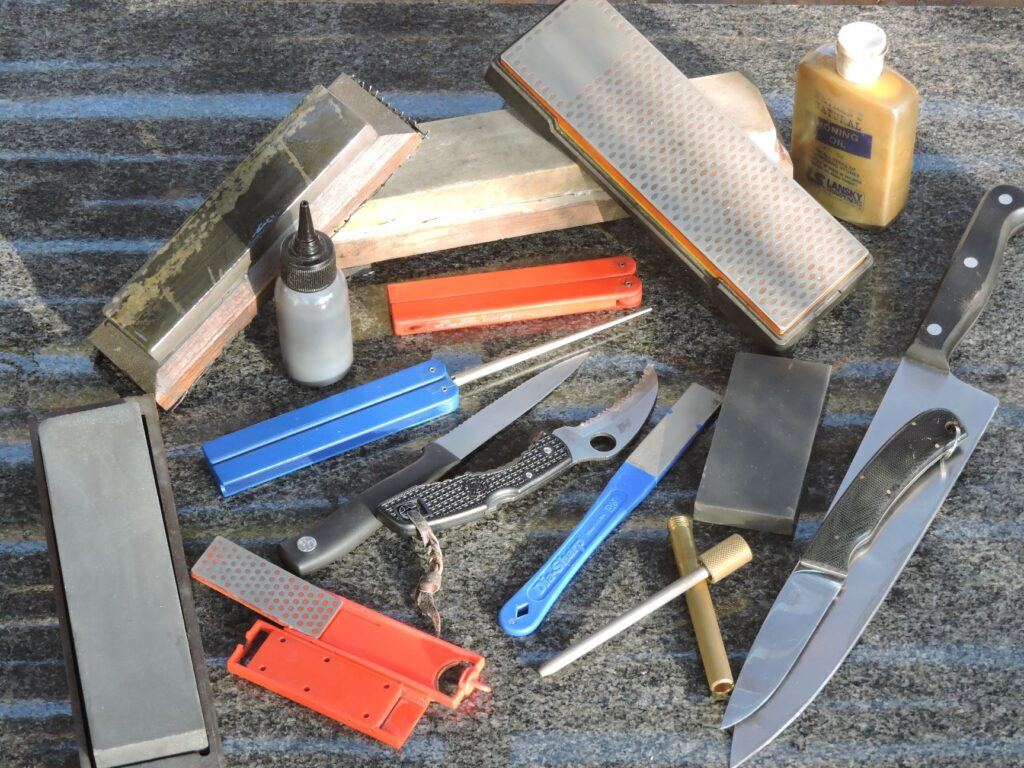
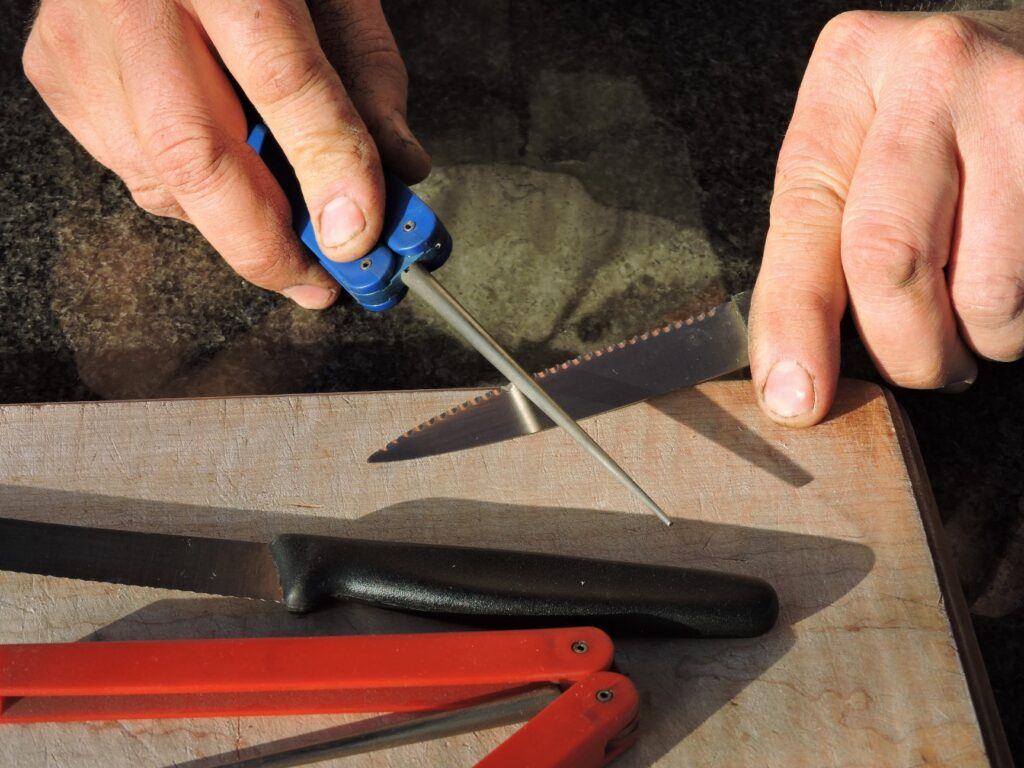
Crafting a sharp, precise blade demands patience, skill, and the right tools. The journey begins with a belt grinder (if you own one) and transitions to hand sharpening, ensuring that your blade is honed to perfection. This guide will walk you through each step, from the initial grind to the final stropping, providing tips and techniques to achieve a razor-sharp edge. Tapered diamond rods are used to sharpen serrated blades.
Step 1: Preparing the Edge with a Belt Grinder
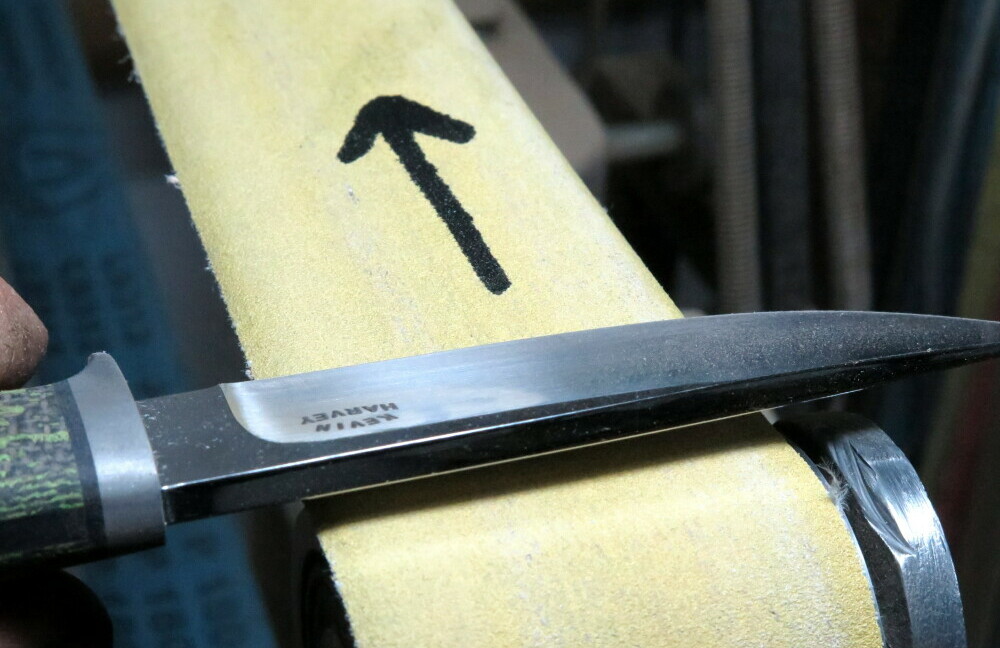
Before you start hand sharpening, you’ll need to bring the blade’s edge up to a point using a belt grinder. This process is more efficient than doing it entirely by hand and sets the stage for finer sharpening later on. If you don’t own a belt grinder, it just means a bit more elbow grease at the sharpening stone.
Equipment Needed: (nice to have but not essential for sharpening)
- Belt grinder
- 180# or 220# belt
Process:
- Setup: After grinding and polishing, ensure the blade edge is 1/10th of the thickness of the knife’s spine.
- Grinding: If your belt grinder has a reverse function, use it for convenience. Grind on the slack portion of the belt with the belt direction running away from you. Be careful to position the blade so it doesn’t cut into the belt.
- Safety First: Always switch the machine back to the forward setting when turned off to avoid accidents. A knifemaker lost teeth because he forgot this step and had the machine throw the blade into his face.
- Control Heat: Set the machine speed slow and use a sharp belt to minimize heat buildup. Overheating will soften the blade. Cool the blade frequently in water and avoid any visible colour changes on the edge.
Technique:
- Angle: Grind symmetrically on both sides at an approximate angle of 22°.
- Burr Formation: Continue until a tiny burr forms along the entire edge. This burr indicates that the two cutting-edge angles have met, making the steel thin enough to bend.
Step 2: Hand Refining the Edge
Once the blade has a basic edge from the grinder, it’s time to refine it by hand using a whetstone, oil, and a strop.
Equipment Needed: https://amzn.to/4bBLg29
- Whetstone (medium grit Arkansas stone, fine aluminium oxide stone, or fine diamond stone)
- Light oil (or water if sharpening kitchen knives)
- Strop (leather glued to wood)
Process:
- Preparation: Apply a thin coating of oil to the stone.
- Sharpening Angle: A good angle is around 22.5°. Rest the blade at 90°, halve it to 45°, and halve again to get 22.5°. Maintain this angle consistently.
- Technique:
- Stroke: The forward stroke into the stone has the greatest impact. Keep the blade in contact with the stone on the reverse stroke to maintain the angle. Imagine you are trying to pry a postage stamp off the stone.
- Testing: Use the “fingernail test” to check if the edge is sharp. Gently press the edge against your fingernail to see if it bites in. If the entire edge passes the test, proceed to the next phase.
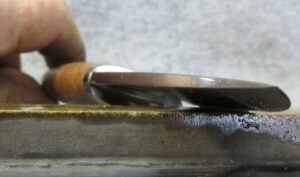
Step 3: Stropping for the Final Edge
Stropping is the final step, removing the burr and polishing the edge to achieve a sharp finish.
Process:
- Stropping Action: Swipe the blade backwards over the leather, focusing pressure on the cutting edge. Angle the blade slightly steeper than used for stoning.
- Pressure: Apply firm pressure. Work from the choil to the tip in sections, alternating sides.
- Alternative Media: A trouser belt or softwood can suffice if a leather strop is unavailable.
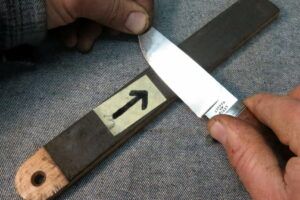
Technique:
- Burr Removal: The goal is to burnish and flex the burr until it cracks off. This leaves the edge sharp and ready for use.
- Consistency: Ensure each blade section gets equal attention for a uniform edge.
Final Testing and Maintenance
Sharpness Test:
- Paper Test: Slice through paper without snagging or ripping. Newspapers are more challenging and are better tests than typing paper.
- Shaving Test: For the brave, try shaving (your face, not your arm). A sharp knife should easily shave without pulling.
- Teach Clients: If you sell knives, educate your clients on proper maintenance to keep their blades sharp.
Sharpening a blade is an art that improves with practice. Understanding the process and applying consistent techniques will ensure your knives are always in top condition and ready for any task. Happy sharpening!



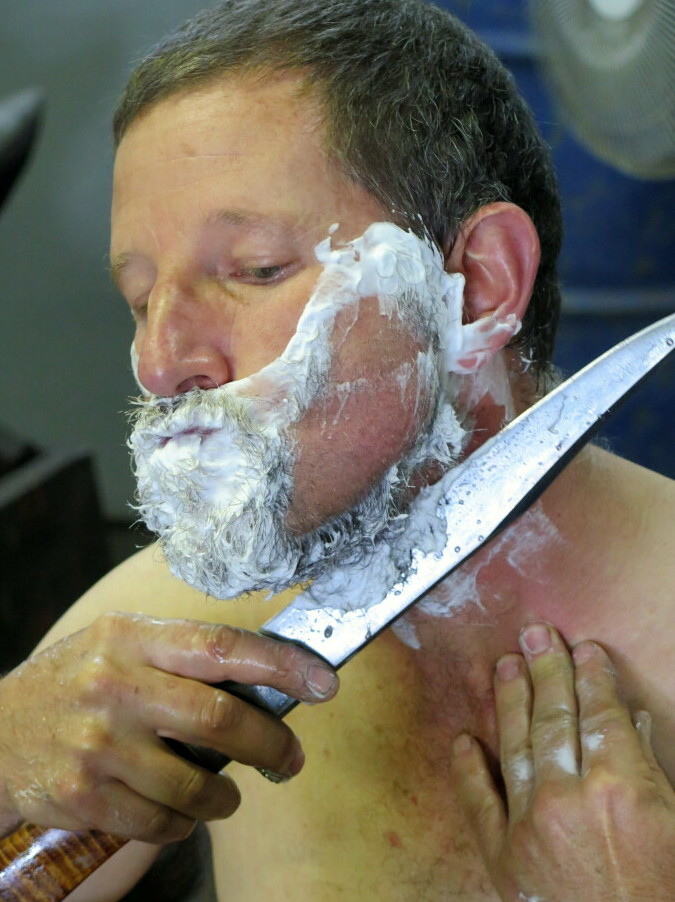
whispersofcomfort.com">Makinde Muyiwa Debowale Fatolu - June 19, 2024 @ 1:16 pm
Hi Heather,
I appreciate your time and effort in putting together this enlightening and informative article.
You succeeded in breaking down the unavoidable and daunting task process of knife sharpening into manageable and practical steps.
Your article provides a thorough roadmap for achieving professional-level knives sharpness at home by preparing the edge, using a belt grinder, which efficiently sharpens the blade. It also makes mention of maintaining an angel of 22°, controlling the heat to prevent blade damage, using hand refining to with a whetstone to further sharpen the blade, and the final step of stropping; polishes the edge and remove any burrs.
Your emphasis on practice and consistent techniques for maintaining sharp knives is commendable.
However, I would like to know, if this process can be applied to the sharpening of all blades including axes, swords, cutlasses, etc.
Thank you for sharing this informative article.
Makinde
https://www.bladesmithingsolutions.com">Heather - June 19, 2024 @ 3:29 pm
Hello Makinde
Thank you so much for your kind comments.
Yes, sharpening blades by hand allows you to sharpen any type of blade, from the smallest pen knife right up to a sword.
If I can answer any other questions, I will be happy to.
Sharp regards
Heather